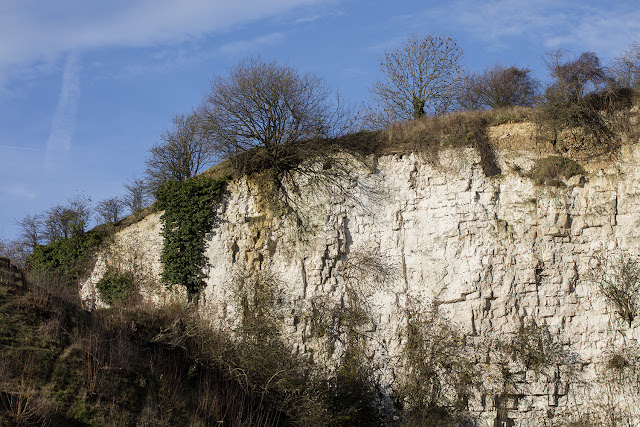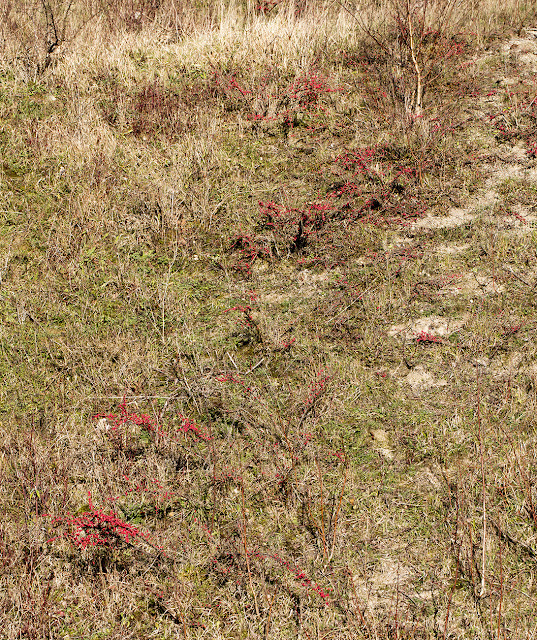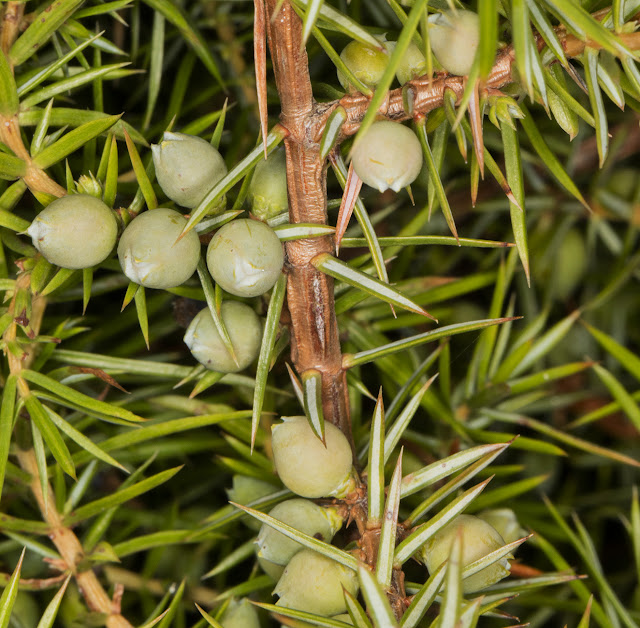 |
| The north end of the face of Riddlesdown quarry, 28 December 2015. |
Last year there were sheep in Riddlesdown Quarry at the time of the year-end walk. This time they were absent. There is a tentative plan to bring back goats; they keep the birch saplings under control, which sheep do not. But it is hard to bring goats in for health checks and the like. Also, they would have to be moved elsewhere for the summer, so that orchids and other desirable flora would not be munched.
 |
| The fenced area above Riddlesdown quarry. 28 December 2015. |
An area at the top of the quarry is fenced off, allowing interesting plants to grow. The small green fence seen here is inside the main fence and is to protect the actual edge. There's a path winding along the top and down near the far fence, curving back into the lower part of the quarry.
 |
| Cotoneasters in Riddlesdown quarry, 28 December 2015. |
Much scrub has been cleared from inside the quarry, and more clearance is planned. These Cotoneasters look pretty but spread too easily, and will be removed. Contrastingly, there are some juniper seedlings at the top which are so slow-growing and tasty to sheep that they have to have individual protective fences around them.
The management team are quite aware that it is rather artificial to look at a piece of landscape at a particular time and say it should stay that way rather than be allowed to develop and change. But this way, rare and interesting plants and insects are encouraged. For example, this is one of the few sites in this part of the country where you can find Round-leaved Wintergreen and Small Blue butterflies.
 |
| Anthills and Junipers at the top of Riddlesdown Quarry. 28 December 2015. |
This is the group on the way back out. The anthills you see here belong to Yellow Meadow Ants, which are eaten by Green Woodpeckers. You can just make out the small Junipers in the middle distance, where the group are walking past them.
I tend to take lots of closeups and not show the general appearance of whatever place I am at, but if I think I might make up a post for this blog I make more of an effort to get some views, as here. But I still like closeups. They reveal details you do not normally see.
 |
| Unripe Juniperus communis berries. Riddlesdown quarry, 28 December 2015. |
Here are some unripe berries I spotted on one of the Juniper bushes.



















